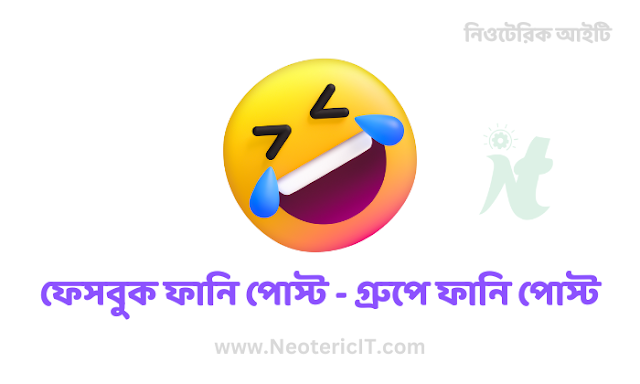Mastering HSC Paragraph Format: Your Ultimate Guide to Writing Clear and Concise Paragraphs
Hello dear guest - Welcome to Neoteric IT . You have come to Neoteric IT for information about Mastering HSC Paragraph Format: Your Ultimate Guide to Writing Clear and Concise Paragraphs Today I will conclude this article by discussing Mastering HSC Paragraph Format: Your Ultimate Guide to Writing Clear and Concise Paragraphs in detail. Search Google to know more about Mastering HSC Paragraph Format: Your Ultimate Guide to Writing Clear and Concise Paragraphs write Mastering HSC Paragraph Format: Your Ultimate Guide to Writing Clear and Concise Paragraphs or click here insightflowblog.com for visit. See the page Table of content for know the main topic of this article. Web story and AMP Version
Are you struggling to write clear and concise paragraphs for your HSC assignments? Look no further! In this ultimate guide, we will show you how to master the HSC paragraph format, enabling you to craft compelling and impressive essays.
Whether you are studying English, History, or any other subject, being able to express your thoughts effectively in a paragraph is essential. Our step-by-step guide will take you through the process of creating well-structured paragraphs that are coherent, cohesive, and coherent.
Mastering HSC Paragraph Format: Your Ultimate Guide to Writing Clear and Concise Paragraphs - en.neotericit.com
We will provide you with practical tips on how to develop a topic sentence, support your main idea with evidence, and tie it all together with a strong concluding sentence. By the end of this guide, you will have the skills to write paragraphs that not only demonstrate your understanding of the topic but also engage and impress your HSC examiners.
Don't let poorly constructed paragraphs hinder your HSC success. Take control of your writing and unlock your full potential with our ultimate guide to mastering HSC paragraph format.
Importance of clear and concise paragraphs in HSC exams
Whether you are studying English, History, or any other subject, being able to express your thoughts effectively in a paragraph is essential. HSC exams require you to convey your ideas with clarity and precision. Well-structured paragraphs not only make your writing more organized but also help you communicate your arguments more effectively.
In order to impress your HSC examiners, you need to demonstrate that you can present your ideas in a coherent and cohesive manner. This means your paragraphs should flow logically from one idea to the next, with each sentence contributing to the overall message. By mastering the HSC paragraph format, you will be able to showcase your understanding of the topic and engage your readers.
Elements of a well-structured paragraph
Before we delve into the specifics of HSC paragraph writing, let's first understand the essential elements of a well-structured paragraph. A paragraph should have a clear topic sentence that introduces the main idea or argument. This topic sentence acts as a guide for the rest of the paragraph, giving your readers a preview of what to expect.
Supporting details are crucial to developing your main idea. These details can include evidence, examples, or explanations that strengthen your argument and provide a deeper understanding of the topic. Each supporting detail should be relevant and contribute to the overall coherence of the paragraph.
A strong concluding sentence wraps up the paragraph and provides a sense of closure. It may summarize the main points or offer a final thought on the topic. By following these elements, you can create paragraphs that are well-structured and engaging.
Understanding topic sentences and supporting details
The topic sentence is the backbone of your paragraph. It sets the tone and direction for the rest of your writing. When crafting a topic sentence, make sure it is clear, concise, and directly related to your thesis or main idea. Avoid vague or general statements that do not provide specific information about what the paragraph will discuss.
Supporting details help to develop and strengthen your main idea. These details can include facts, statistics, examples, or expert opinions. When choosing supporting details, ensure they are relevant, credible, and effectively support your argument. By providing evidence and examples, you can demonstrate your understanding of the topic and convince your readers of your viewpoint.
Remember to use clear and concise language when presenting your supporting details. Avoid unnecessary jargon or complicated vocabulary that may confuse your readers. Keep your sentences focused and to the point, ensuring that each detail contributes to the overall coherence of the paragraph.
Using evidence and examples to strengthen your paragraphs
In order to make your paragraphs more persuasive and compelling, it is important to use evidence and examples to support your arguments. Evidence can come in various forms, such as research findings, expert opinions, or data. By incorporating evidence into your paragraphs, you demonstrate that your ideas are backed by reliable information.
Examples can provide concrete illustrations of your arguments. They can be real-life situations, historical events, or literary references, depending on the subject you are writing about. By using examples, you make your writing more relatable and engaging for your readers.
When using evidence and examples, it is essential to cite your sources properly. This not only gives credit to the original authors but also adds credibility to your own writing. Make sure to follow the appropriate citation style guidelines, whether it is APA, MLA, or any other required format.
Transition words and phrases for smooth paragraph flow
Transition words and phrases are essential for creating a smooth flow between paragraphs and sentences. They help to connect ideas, show relationships, and guide your readers through your writing. By using appropriate transition words, you can make your paragraphs more coherent and cohesive.
Some common examples of transition words and phrases include "however," "on the other hand," "in addition," "furthermore," and "in conclusion." These words and phrases signal a shift in ideas, contrast between two concepts, or the addition of new information. By incorporating them into your writing, you can create a seamless transition between paragraphs, making it easier for your readers to follow your argument.
Common mistakes to avoid in HSC paragraph writing
When it comes to HSC paragraph writing, there are some common mistakes that students often make. These mistakes can hinder the clarity and effectiveness of your paragraphs. Here are a few to watch out for:
1. Lack of a clear topic sentence: Without a clear topic sentence, your paragraph may lack focus and direction. Make sure your topic sentence clearly states the main idea and sets the tone for the rest of your writing.
2. Overuse of long and complex sentences: Long and complex sentences can make your writing difficult to read and comprehend. Aim for shorter, concise sentences that convey your ideas clearly.
3. Lack of supporting details: Without supporting details, your paragraphs may lack depth and substance. Make sure to provide evidence, examples, or explanations that strengthen your arguments.
4. Lack of coherence and cohesion: Your paragraphs should flow logically from one idea to the next. Make sure to use appropriate transition words and phrases to create a smooth and coherent flow.
By being aware of these common mistakes and actively working to avoid them, you can elevate the quality of your HSC paragraph writing.
Practice exercises to improve paragraph writing skills
Improving your paragraph writing skills requires practice. Here are a few exercises you can do to enhance your abilities:
1. Choose a topic and write a paragraph with a clear topic sentence, supporting details, and a strong concluding sentence. Pay attention to coherence, cohesion, and the use of transition words.
2. Analyze well-written paragraphs from published articles or books. Identify the topic sentence, supporting details, and how the paragraph flows.
3. Rewrite paragraphs from your previous essays, focusing on improving clarity, coherence, and cohesion. Experiment with different sentence structures and transition words to enhance the flow of your writing.
By regularly practicing these exercises, you can develop your paragraph writing skills and become more confident in your ability to create clear and concise paragraphs.
Reviewing and revising your paragraphs
Once you have written your paragraphs, it is important to review and revise them for clarity and effectiveness. Take the time to read through your paragraphs carefully, checking for any grammatical errors, awkward phrasing, or unclear statements.
Ask yourself if your paragraphs convey your intended message and if your supporting details effectively support your main idea. Consider if the flow between paragraphs is smooth and if your transition words and phrases enhance the coherence of your writing.
It can also be helpful to seek feedback from a teacher, tutor, or peer. Another set of eyes can often spot errors or areas for improvement that you may have missed. Take their suggestions into consideration and make the necessary revisions to strengthen your paragraphs.
Conclusion: Mastering HSC paragraph format for exam success
Mastering the HSC paragraph format is essential for exam success. By understanding the importance of clear and concise paragraphs, mastering the elements of a well-structured paragraph, using evidence and examples effectively, incorporating transition words and phrases, and avoiding common mistakes, you can take your HSC writing to the next level.
Remember to practice regularly and seek feedback to continuously improve your paragraph writing skills. With dedication and perseverance, you can become a master of HSC paragraph format and impress your examiners with your clear and concise writing.
Don't let poorly constructed paragraphs hinder your HSC success. Take control of your writing and unlock your full potential with our ultimate guide to mastering HSC paragraph format.
You are indeed a valued reader of Neoteric IT. Thank you so much for reading Mastering HSC Paragraph Format: Your Ultimate Guide to Writing Clear and Concise Paragraphs article. Please let us know how you feel after reading this article.

 Follow Google News to get the latest Neoteric IT news
Follow Google News to get the latest Neoteric IT news 
.png)





Please comment in accordance with the policy - otherwise your comments will not be accepted.
comment url